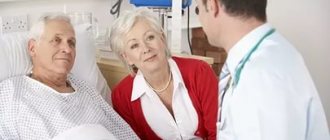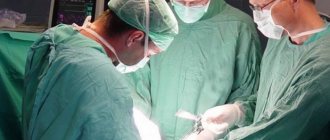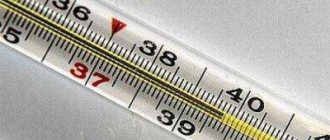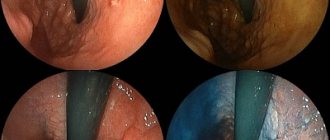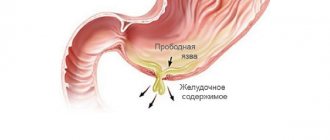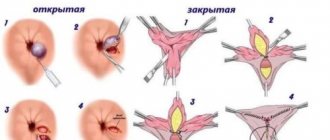Abdominal surgeries
These can be quite serious interventions in internal organs, as well as simpler manipulations. One of the most common operations after which women want to get back in shape as quickly as possible is a caesarean section. The abdominal muscles require tightening after bearing a child, and the former physical activity is slightly lost during this period. In addition, girls often strive to restore their abs after surgery on the pelvic organs or removal of appendicitis. The paradox is that the muscles that you want to pay attention to in the gym should not be strained after such operations - after all, the seam should heal properly and the tissue should be restored!
Doctors usually recommend resuming sports no earlier than two months after any abdominal surgery. The postoperative period depends on the complexity of the operation and the person’s condition. In any case, before visiting the gym, you should consult with your doctor.
Early postoperative period: what is possible and what is not
The time spent in the hospital after appendicitis ranges from 3 days to several weeks. All this time, patients are under the supervision of medical workers. What can be done during this period, and what is strictly prohibited?
- eat liquid and pureed food, which will not “load” the intestines with unnecessary work;
- walk slowly with rest breaks;
- lie down and rest more.
Is it possible to swim immediately after surgery? Traditional water procedures are prohibited, but it is important to perform hygiene of certain areas of the body twice a day. Avoid getting water into the incision site until the stitches are removed and a permanent scar has formed.
Read more After issuing a writ of execution, what to do
In the early postoperative period you cannot:
- walk or run quickly;
- stay in a standing position for a long time;
- lift weights;
- engage in any kind of sports.
Limb surgeries
In case of complex fractures and operations undergone in this regard, you will have to forget about stress for a long time. Even after your cast is removed, you should not actively rush to the gym and give your limbs the same load. The function of muscles and bones should be restored gradually. Be prepared for the fact that you will not be able to fully use your arm or leg during training for about six months, and maybe longer.
For those who have had leg surgery to remove varicose veins, the recovery period is much shorter. After laser removal, the patient can return to their normal lifestyle within 2 weeks. Loads on the legs are recommended no earlier than after 3-4 weeks.
It should be noted that physical activity is even necessary some time after surgery - it improves blood flow, prevents the formation of blood clots and shortens the rehabilitation period. However, the exercises that are recommended in a particular case should be prescribed by the attending physician. Often, after operations, patients are referred to a course of physical therapy (physical therapy). With a simple course of exercises designed specifically to speed up the healing of a particular organ or tissue in the postoperative period, you can reduce pain, get rid of swelling and speed up the healing process. Therefore, you should not neglect this set of exercises.
6 minutes Author: Lyubov Dobretsova 19154
One of the prerogative aspects of laparoscopic surgery, in contrast to conventional strip surgery, is the shortened rehabilitation period. Work activity, intimate relationships and sports are allowed earlier after laparoscopy. However, this does not mean that physical activity can be resumed immediately after surgery. Like any surgical intervention, laparoscopy has a time interval for recovery of the body with certain limitations.
How long should you observe sexual rest?
If your surgery goes without complications, the main sutures will be removed 10–15 days after the procedure. The threads will remain in the area of large blood vessels to prevent bleeding.
You cannot have sex after the stitches are removed. Especially without a condom. Wounds on the skin around the penis and marks from threads will not have time to heal in 2-3 weeks. Bacteria can enter the blood through them, causing infection and inflammation.
The World Health Organization recommends sexual rest for at least 42 days, but it is better to wait 6-7 weeks. Before having sex for the first time, visit an andrologist and make sure that the foreskin is completely healed and the likelihood of injury, rupture and bleeding is minimal.
What to do with morning erections
Many circumcised men experience morning erections within 3–5 days. This means that the operation to remove the foreskin was successful and your reproductive system was not damaged.
American doctors recommend that their patients be sexually active 1–2 weeks before circumcision. Regular sex reduces the likelihood of morning erections. Sudden excitement is dangerous in the early stages of rehabilitation because it can cause sutures to rupture and cause bleeding.
If you feel an erection coming on or wake up with an erect penis, try to calm down:
- Take a cold shower or apply an ice pack to your groin area. Low temperatures will slow down blood circulation in the genitals and reduce swelling. Just do not hold the cold compress for too long, so as not to provoke inflammation and frostbite of the skin.
- Distract yourself with a book or TV series. Thinking about extraneous things will reduce arousal and help you relax.
- Don't try to masturbate. In the first weeks after circumcision, not only sex is contraindicated, but also self-gratification. Any manipulation of the penis, except for hygiene procedures, slows down wound healing and recovery.
Why is the recovery period shorter with laparoscopy?
The laparoscopic method of surgery is practiced in operations on the lungs (thoracic operations), organs of the urinary system, gynecology, and gastrointestinal tract. Laparoscopy is performed using a special device (laparoscope) equipped with a light system, a video camera and an additional surgical instrument (trocar). The necessary medical instruments are introduced into the patient's body through small incisions.
The image captured by the camera is reproduced on the monitor, and the doctor can examine in detail each individual area of the operated organ. Surgery is performed under general (less often local) anesthesia. Laparoscopic surgery takes a shorter period of time and does not disturb the external aesthetics of the body. Soft tissues are subject to minimal trauma during the intervention.
The sutures are protected from infection due to their tiny size and heal much faster. The time spent in the hospital does not exceed 2–4 days. Recovery time at home is also shortened. When the operation is performed correctly, complications rarely occur. Typically, such troubles occur due to the fault of patients who do not follow the postoperative rules of nutrition and physical activity. In particular, they do not maintain the time period determined by the doctor until the moment when playing sports after laparoscopy can be done without fear.
Physical education and sports after laparoscopic surgery
The answer to the question of how long after you can start exercising depends on the specific case. A physically prepared body copes with the stress received during surgery much faster. If, for example, a woman actively trained before laparoscopy, her motor rehabilitation period may be shorter. For older people, physical recovery is more difficult and slower.
There are general recommendations for the physical restoration of the body and the resumption of active training, which can be adjusted to the individual characteristics of the body and health status. To optimize the time and load parameters of physical activity, the best option would be to consult a sports doctor. If this is not possible, it is necessary to consult with your doctor and a medical specialist in the field of exercise therapy (physical therapy).
Most operations performed laparoscopically affect the internal organs of the female reproductive system or the digestive tract. This must be taken into account when creating a training schedule. Loads on the anterior abdominal wall are contraindicated in the first month; subsequently they must be strictly dosed.
Where to begin
In order not to harm your health, it is necessary to accustom your body to physical activity gradually. The best option would be to start with daily walking. Thus, the muscular, cardiovascular and respiratory systems will be strengthened. You can start with a 5-10 minute walk, each time trying to increase the time and distance. You should not walk alone, as a weakened body can fail at any moment.
Dosed loads
After three weeks, you can gradually move on to a therapeutic gymnastics complex to strengthen the musculoskeletal system. Exercises must be performed daily, strength loads should be excluded. Gymnastics can be done in a vertical and horizontal position. If pain occurs, it is recommended to reduce the intensity of the load and the time of exercise.
A single session can last from 10 to 20 minutes, depending on how you feel. Overloading the body is extremely dangerous. This is especially true for women watching their weight. In pursuit of slimness, young ladies often exceed the permissible norm of vigorous exercise, which invariably leads to the development of complications (hernia, bleeding).
Regular training
Sports training with moderate load is allowed no earlier than after two months. Strength exercises should be postponed for 3–4 months (with strip surgery, patients are not allowed to do strength training with minimal load for six months). You need to start with a minimum weight, no matter how long a person has been playing sports. The permissible weight of equipment should not exceed 5 kg for men and 3 kg for women.
The time interval for physical education in a gentle mode depends on the condition of the sutures, the absence of complications, and the general tone of the body. If the recovery period proceeds in the correct mode, the patient usually returns to preoperative sports activities after 5–6 months. For professional athletes, a sports doctor monitors their health. Rehabilitation training is developed individually, taking into account the type of sport, general physical readiness, and the complexity of the laparoscopic surgery performed.
Intimate life as part of physical activity
Since sexual relations are considered physical activity, after surgery it is necessary to abstain from sexual activity for a month. In the case of gynecological laparoscopy, this period can be extended to 2 months. Just like basic physical activity, intimate life should not begin with increased loads. Rationally planned physical education classes will only bring benefits to the body. The main thing is to find a middle ground so that the process of rehabilitation of motor activity does not lead to complications.
Patients who have undergone an appendectomy are often concerned with the question: when can you play sports after appendicitis? Many patients, before being seen by a surgeon, regularly went to the gym or practiced active sports in the fresh air.
After surgery, the body needs rest and recovery, but this does not mean that you should forget about physical activity. Dosed exercise, selected according to the patient’s condition, will bring undoubted benefits to the body and help avoid postoperative complications.
So, how exactly should people who have had their appendix removed play sports, and what do experts think about this?
When can you exercise after an appendectomy?
Sports after appendicitis are allowed only when the sutures are completely healed, in order to eliminate the risk of their divergence and suppuration. At the same time, you should load the abdominal muscles extremely carefully, and this should be done slowly. You should start with slow short walks in the fresh air, gradually increasing their duration and pace. 3 months after surgery you can start visiting the pool. The first swims should be short-term, and the patient needs to carefully monitor his own sensations.
It is extremely important to avoid intense physical activity in the first few months after surgery. They will not help you get into the desired shape faster, but they can significantly undermine the health of a weakened body.
General tips during recovery
Rehabilitation after removal of the appendage of the cecum should take place with monitoring of the condition of the suture. Even the patient needs to examine the wound for changes. If you observe neoplasms at the site of the suture, after lifting weights or exercises, contact your doctor. In most cases, neoplasms appear due to the accumulation of pus and blood under the dermis. This can cause unpleasant consequences.
After appendicitis, you can lift weights depending on the patient's condition. In cases without complications, physical activity after surgery is indicated a month later. When unpleasant consequences appear, the patient is prescribed bed rest for the entire week after the intervention. It is recommended to lift heavy objects and exercise after 90 days. Then for another whole year, doctors put forward restrictions on carrying heavy weights.
The information on our website is provided by qualified doctors and is for informational purposes only. Don't self-medicate! Be sure to consult a specialist!
Author: Rumyantsev V. G. Experience 34 years.
Gastroenterologist, professor, doctor of medical sciences. Prescribes diagnostics and carries out treatment. Expert of the group for the study of inflammatory diseases. Author of more than 300 scientific papers.
The gallbladder (GB) is not a vital organ. But after its removal, some restrictions are imposed on daily life. In addition to following a strict diet, you need to limit physical activity. In this article you will find out whether it is possible to wear weights after removal of the gallbladder, and when the body will come to its senses after the operation.
Normally, bile from the liver cells enters the gallbladder. The process of its production occurs constantly. The gallbladder is located on the lower surface of the liver in the area of the right lower rib. It serves as a reservoir for storing bile, so that during meals, all the accumulated bile enters the intestines for the digestion of fats.
Gallstone disease leads to the formation of calculi (stones) in the gallbladder and its inflammation. The main treatment method is removal of the bladder. After a cholecystectomy, there is no longer room for bile to accumulate. It immediately enters the duodenum from the biliary system.
Small portions of bile will not be able to digest large amounts of fat. The intestines begin to synthesize many enzymes, this is a huge job. Therefore, the patient needs to follow a diet, otherwise the weight will quickly increase.
Permissible types of loads after surgery
Physical activity after removal of appendicitis should be gentle.
In order to recover from surgery as quickly as possible, but without harming the body, you should adhere to the following recommendations:
- Always start with minimal loads. If these are walks, then let them last 10 minutes a day at first. Over time, as your health improves, their duration can be increased.
- After abdominal surgery, you need to choose non-active sports that will simultaneously help strengthen the muscles of the whole body. The best choice in such a situation is yoga and Pilates. The latter is most preferable, since it was originally developed as a gymnastics for the recovery of patients after severe operations and physical injuries. When exercising, preference should be given to exercises that do not affect the abdominal area. Such classes can be introduced over time, when the risk of complications is over.
- You should avoid active sports, as well as exercises aimed at working your abs. This can be all kinds of bending, twisting, lunging. You can return to them later. The main attention should be directed to working out the limbs and strengthening the whole body.
- An important point is that lifting barbells and dumbbells is also prohibited for at least six months after surgery. You cannot lift weights more than 3 kg, this applies not only to sports, but also to everyday life.
- As you recover, you can start dancing, running and jumping. Such exercises increase the overall endurance of the body. In this case, the press is not directly involved.
Lifestyle
For the entire 14 days after surgery, you can maintain normal activity, but without physical overload: you will have to suspend contact or weightlifting sports, swimming in the pool, or cycling. Why is this necessary? Excessive physical activity, impacts and falls can cause the seams to separate.
Rest when you feel tired. Good sleep promotes normal recovery and healing.
You can eat as usual. You do not need to follow any special diet.
Drink more clean water.
Mandatory requirements for conducting exercises
Exercise after appendicitis should be started only after consultation with your doctor. It is important not to forget about the rules of rehabilitation and refuse to perform the following exercises:
- You need to try not to strain your abdominal muscles for as long as possible. This will allow them to get stronger and will not lead to pain. During the first year after surgery, you should hold off on lifting weights and doing exercises aimed at pumping up your abdominal muscles.
- Spot active sports, such as tennis, football, basketball, running, should be started carefully, without overstraining the body. The same goes for sports dancing.
- Classes should be easy and not burdensome, during them there should be no discomfort or pain, and a person should not feel excessive fatigue.
- It is best to start returning to sports with exercise therapy, and as the body strengthens, add new types of physical activity.
Medicines
Take only what your doctor recommends. If you stopped taking any medications on your doctor's recommendation before circumcision, find out when you can resume taking them.
Do not take several different pain medications at the same time. If you think the recommended medicine is not working, call your doctor and ask.
If you have been prescribed antibiotics, be sure to take the entire prescribed course and do not stop just because you feel better. Don't forget to take a probiotic along with the antibiotic to keep your digestive system functioning properly.
